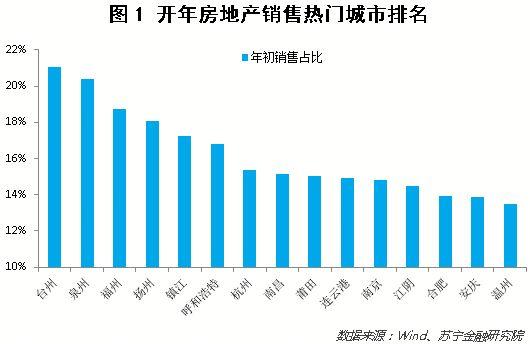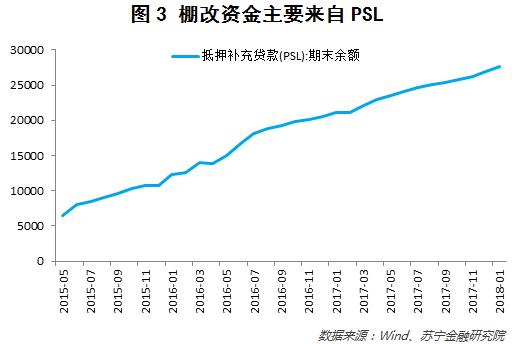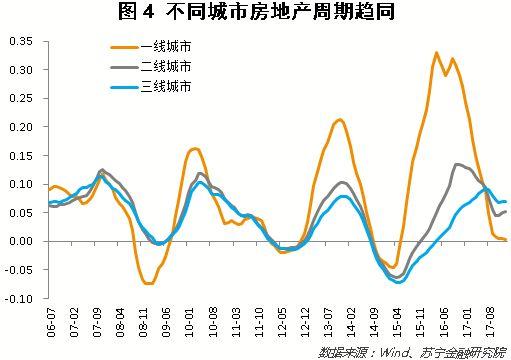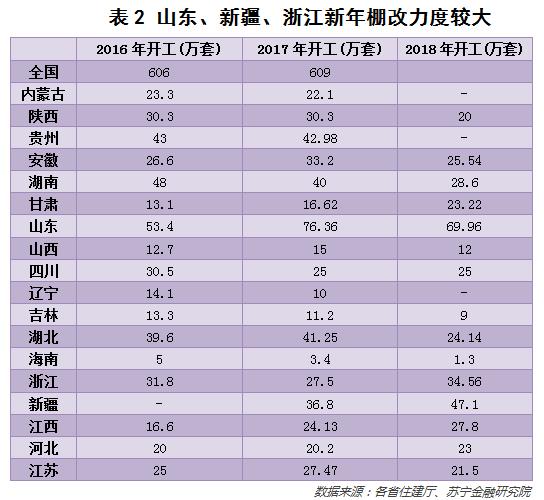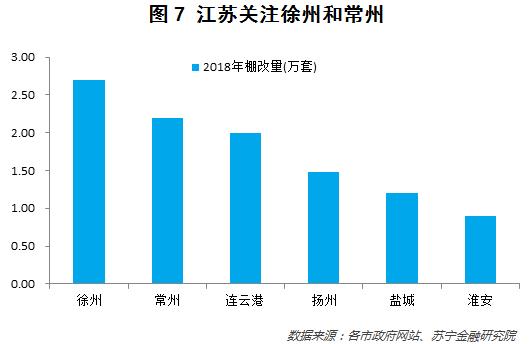Suning Financial Research Institute
7.0%! The statistics bureau recently released the housing price data of newly built houses in 70 large and medium-sized cities in January. Among them, the housing price in the third and fourth tier cities rose 7.0% year on year, while that in the first tier cities rose only 0.4% year on year.
If you look at the intermediary's statistics, many third and fourth tier cities have generally seen house prices rise by more than 20% in the past year, such as Quanzhou by 25% and Anqing by 21%.
If the rise in housing prices is generally transmitted from the first tier cities to the second tier cities, and finally to the third and fourth tier cities, should we join in the rising housing prices in our hometown? After reading this article, you will have a rational choice.
Which third and fourth tier cities have made a good start in real estate?
One big difference between the first tier cities and the third and fourth tier cities is that the real estate sales in the third and fourth tier cities rely more on the Spring Festival sales. For the first tier cities, when the Spring Festival comes to home and travel time, the whole city will become empty, and the real estate sales will plummet. However, for the third and fourth tier cities, the Spring Festival is the peak of home purchase, so developers in the third and fourth tier cities attach great importance to Spring Festival promotions.
From the survey data, people who work in big cities this year have a strong desire to return to their homes. According to the survey information, about 38% of migrant workers want to go back to their hometown to buy a house, and 21% want to go to the provincial capital city of their hometown to buy a house, that is, about 60% want to go back to their hometown to buy a house. Among the third and fourth tier cities, Yancheng, Anqing, Taizhou, etc. are popular cities for returning home to buy property (see Table 1).
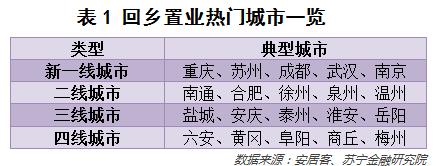
In addition to research information, we can also see which cities are hot in the near future from the sales data. Use the data of the proportion of residential sales in January and February of this year to the sales in the past 12 months to see which cities have made a good start in real estate. It can be found that the sales of third and fourth tier cities such as Taizhou, Quanzhou, Yangzhou and Zhenjiang are very good at the beginning of this year, and the sales in the first two months accounted for more than 15% (see Figure 1).
What are the reasons for the rise of housing prices in third and fourth tier cities?
What are the driving factors behind the successful start of real estate in these third and fourth tier cities? In my opinion, the soaring housing prices in the third and fourth tier cities are closely related to the monetization of housing reform.
First of all, the next three years will still be the big year of shed renovation. According to the data released by the Ministry of Housing and Urban Rural Development, the construction of shed renovation has been about 6 million units per year in the past two years, of which 6.06 million units were actually started in 2016 and 6.09 million units were actually started in 2017. In May 2017, the executive meeting of the State Council decided to start the construction of 15 million sets of shantytowns from 2018 to 2020, that is, 5 million sets per year. However, at the end of 2017, the Ministry of Housing and Urban Rural Development disclosed that the construction of 5.8 million units of the housing reform plan in 2018 exceeded the previous expectation of 5 million units, so it was considered good (see Figure 2).
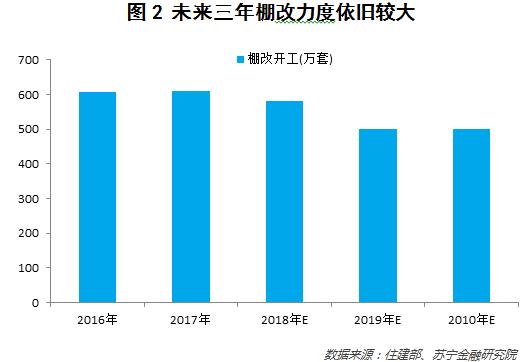
Secondly, the monetization of shantytown reform has supported the demand for third and fourth tier real estate. Specifically, there are two ways of compensation for shed change: one is physical resettlement, which is to build or purchase demolition houses for shed change residents; The second is monetary resettlement, and cash is given to residents in shantytowns. Due to the high inventory of real estate in the third and fourth tier cities, monetary resettlement has gradually become the mainstream of compensation for shed reform. Residents who receive cash will generally go to nearby cities to buy houses, so that monetary resettlement can play a triple effect of shed reform, destocking, and driving house prices.
For example, according to the list of projects for the 2017 shantytown renovation plan released by Zhejiang Province, 275000 sets of shantytown renovation projects are planned to start in 2017, and residents have four choices: the government purchases commercial housing for resettlement, organizes residents to choose commercial housing for resettlement, free compensation, and starts resettlement housing. Among them, 118000 sets of shed renovation projects involving free compensation, accounting for about 43%.
Nationwide, the main source of funds for shantytown reform is the supplementary mortgage loan (PSL) provided by the central bank to policy banks, and then the policy banks provide financial support to local governments for shantytown reform projects. By the beginning of 2018, the balance of supplementary mortgage loans had reached 2.76 trillion yuan (see Figure 3).
Pay special attention to the delivery time when buying houses in the third and fourth tier
Since the monetization of the shed reform is an important driver of the house prices in the third and fourth tier cities, what should be paid attention to for the buyers who want to buy houses in the third and fourth tier cities in the face of the situation that the shed reform is still strong in the next three years?
From the perspective of time, if you want to buy a house in the third and fourth tier cities, it is recommended to buy a property that can be delivered before the end of 2018. The reason is that:
First of all, the third and fourth tier cities just need less stamina, and the real estate risks will be gradually released after 2020. The difference between the third and fourth tier cities and the first tier cities is that the first tier cities are basically the areas where the population continues to flow in, so they do not worry about the shortage of rigid demand; However, the third and fourth tier cities generally have no prominent core industries and lack obvious comparative advantages in education, medical care, etc., so it is difficult to sustain a net inflow of population. Just after the release of a wave of real estate boom, it is easy to be out of gear and lack of stamina. Considering that there are still three years of bonus period for shantytown reform in the future, if you want to participate in the real estate market in third and fourth tier cities, it is a better strategy to hand over houses before the end of 2018 and exit before the end of 2020. After 2020, the third and fourth tier cities may generally face the situation of large supply, but no one will take over.
Secondly, as the real estate in the first and second tier cities cools down, the real estate in the third and fourth tier cities is unlikely to go out of the independent market. Historically, the real estate cycle of the third and fourth tier cities is generally similar to that of the first and second tier cities, except that the first and second tier cities started earlier and the third and fourth tier cities started later. For example, in this round of real estate market, house prices in first tier cities increased significantly in 2015, second tier cities increased significantly in 2016, and third tier and fourth tier cities increased significantly in 2017 (see Figure 4).
At present, the year-on-year growth of the first and second tier house prices has dropped significantly, and it is expected that the third and fourth tier cities will follow. The reasons behind this are:
(1) The pro cyclical credit policy of the bank has made it tighten the credit line when the real estate cycle goes down, forming a negative feedback mechanism for sales and house prices. For example, the average interest rate of residential mortgage loans has increased from 4.5% in the middle of 2016 to 5.3% at the end of 2017;
(2) In the general environment of deleveraging, local government financing is limited, and the ability to maintain monetary compensation for shantytown reform is declining. For example, Shandong Province encouraged the implementation of physical resettlement for shantytown reform in 2018, which means that the pulling effect of shantytown reform on housing prices is declining.
These cities with great efforts in shed renovation can pay attention to
In addition to the time to consider the delivery of houses by the end of 2018 and the withdrawal before the end of 2020, we should also select cities with greater efforts in shed renovation in space.
First, look at the new year's shanty reform plans in different provinces. Shandong, Guizhou, Hubei and Hunan are the major provinces of shed reform in the past two years. At present, some provinces have also announced the planned commencement of shed reform in 2018. It can be found that Shandong, Xinjiang, Zhejiang and other provinces are still making great efforts in shed reform in the new year (see Table 2).
According to the construction plan of shantytowns in Shandong, Rizhao, Heze and Dezhou can consider participating. At present, Shandong Province has announced the commencement plans of the shed reform in 2018 in each city. From the perspective of sequencing, Rizhao, Heze and Dezhou have made great efforts in the shed reform, with the planned commencement of 86000, 62000 and 61000 sets respectively. On the contrary, the intensity of shed reform in Laiwu and Dongying is weak, and the plan of shed reform in both cities is less than 10000 sets (see Figure 5).
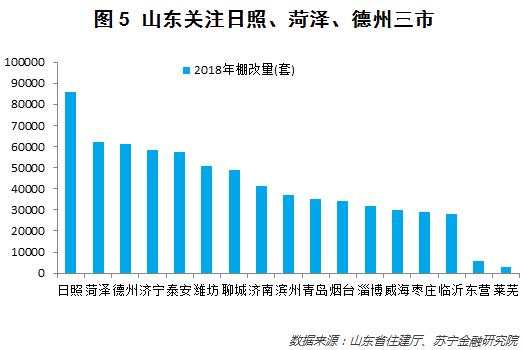
Judging from the construction plan of shantytowns in Zhejiang, Wenzhou, Hangzhou and Shaoxing have a great opportunity. At the end of 2017, Zhejiang Province announced the construction plans for the shed renovation in 2018 in three batches. From the perspective of sequencing, Wenzhou, Hangzhou and Shaoxing have made great efforts in the shed renovation, and the planned construction quantities are 106000 sets, 60000 sets and 46000 sets respectively. On the contrary, Quzhou and Lishui have relatively weak efforts in shed reform, with less than 10000 sets planned in both cities (see Figure 6).
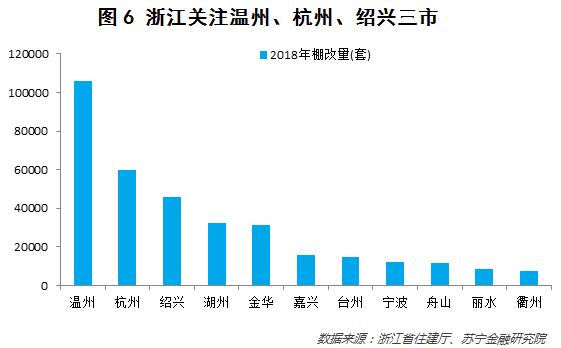
At present, Jiangsu Province has only announced the construction of 215000 sets of the provincial 2018 shed renovation plan, but has not broken down the construction plan to cities. From the perspective of cities with disclosed data, the construction of shed renovation in Xuzhou and Changzhou in 2018 was more than 20000 sets, but the horizontal comparison shows that the construction of shed renovation is much smaller than that of major cities in Shandong Province and Zhejiang Province (see Figure 7).
Finally, if you buy a house in the third and fourth tier cities to prepare for your parents to live or work back home, you can start as soon as you have enough down payment. After all, you can enjoy the house one day earlier if you live in it.
Editor in charge: Xie Haiping

